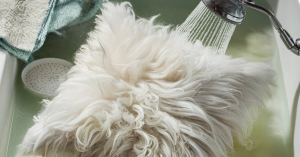
How to Ship a Pillow?
Discover the secrets to shipping pillows safely and cost-effectively! Our comprehensive guide covers packaging, labeling, and tracking.
Are you an Etsy seller or small business owner looking to ship pillows safely and cost-effectively? Shipping delicate items like pillows can be tricky, but with the right techniques, you can ensure your products arrive at their destination in perfect condition. In this blog post, we’ll walk you through the step-by-step process of shipping pillows, from choosing the right packaging materials to addressing and tracking your shipment.
Table of Contents
TogglePreparing the Pillow for Shipping
Step 1: Clean and Fluff the Pillow
Before packing your pillow, make sure it is clean and free of any dirt or stains. Follow the manufacturer’s instructions for cleaning the pillow, and then gently fluff it to restore its shape and appearance.
Step 2: Choose the Right Packaging Materials
Selecting the appropriate packaging materials is crucial to protecting your pillow during transit. You’ll need the following:
- Cardboard box: Choose a sturdy box slightly larger than the pillow to allow for cushioning materials.
- Plastic bag: Place the pillow in a plastic bag to protect it from moisture and potential spills.
- Bubble wrap or packing paper: Wrap the pillow in bubble wrap or packing paper to provide ample cushioning.
- Tape: Use high-quality shipping or packing tape to securely seal the box.
Step 3: Package the Pillow
- Place the pillow in the plastic bag and seal it tightly.
- Wrap the bagged pillow in bubble wrap or packing paper, ensuring it is fully covered.
- Place the wrapped pillow in the cardboard box, making sure there is enough space around it for additional cushioning.
- Fill any remaining space in the box with more bubble wrap or packing paper to prevent the pillow from shifting during transit.
- Seal the box securely with tape.
Addressing and Shipping the Package the Pillow for Shipping
Step 4: Label the Package
Clearly write the sender’s and recipient’s addresses on the box using a permanent marker. Make sure the labels are legible and will not smudge or fade during shipment.
Step 5: Consider Insurance
For valuable pillows, it may be wise to consider adding insurance coverage to protect against loss or damage during transit. Check with your chosen shipping provider for insurance options.
Step 6: Select a Shipping Service
Research and choose a reliable shipping service that matches your budget and desired delivery timeframe. Consider factors such as their track record, customer reviews, and reliability.
Step 7: Schedule Pickup or Drop-off
If the shipping service can pick up your package, schedule a pickup at your location. Otherwise, drop off the package at the nearest shipping location.
Tracking and Monitoring the Shipment
Step 8: Retain Tracking Information
Take note of the tracking number provided by the shipping service. This will allow you to track the shipment online or with customer service.
Step 9: Inform the Recipient
Share the package’s tracking number with the recipient so they can monitor its progress and anticipate its arrival.
Final Words
Shipping pillows can be a delicate task, but by following these steps, you can ensure your products arrive at their destination in perfect condition. Remember to choose the right packaging materials, label the package clearly, and track the shipment to provide a seamless customer experience. Good luck with your pillow shipping endeavors!
Frequently Asked Questions
While it is possible to ship a pillow in a poly mailer, it is generally not recommended. Poly mailers offer limited protection and may not be sturdy enough to prevent damage to the pillow during transit. It’s best to use a sturdy cardboard box and proper cushioning materials to ensure the pillow arrives safely.
Starting a pillow business involves several key steps:
- Conduct market research to identify the demand for custom or specialty pillows.
- Develop a unique product line and source high-quality materials and manufacturers.
- Create a strong brand identity and build an online presence, such as an e-commerce website.
- Develop a marketing strategy to reach your target audience, such as social media, influencer partnerships, and targeted advertising.
- Streamline your operations, including inventory management, order fulfillment, and customer service.
- Continuously gather feedback and iterate on your product offerings to meet the evolving needs of your customers.
- Determine the desired firmness and loft of the pillow, and choose an appropriate filling material, such as polyester fiberfill, down, or memory foam.
- Measure the pillow cover or case and cut the filling material to the appropriate size, leaving a small amount of extra room for expansion.
- Gradually add the filling material to the pillow cover, fluffing and distributing it evenly as you go.
- Once the pillow is filled to your desired level of firmness, close the opening of the cover using a sewing machine or hand-stitching.
- Fluff and shape the pillow to achieve the desired look and feel.



